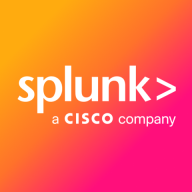

Find out in this report how the two Application Performance Monitoring (APM) and Observability solutions compare in terms of features, pricing, service and support, easy of deployment, and ROI.


OpenText SiteScope is an agentless monitoring program that tracks the availability and performance of distributed IT infrastructures such as servers, network devices and services, applications and application components, virtualization software, operating systems, and other IT enterprise components.
OpenText SiteScope is an autonomous hybrid IT monitoring system that can monitor more than 100 different types of IT components in real time, thanks to a lightweight and highly customizable remote access architecture.
With OpenText SiteScope, IT teams can get the data they need to keep on top of problems and eliminate bottlenecks before they become major concerns.
OpenText SiteScope can reduce total cost of ownership (TCO) by utilizing agentless technology, which eliminates the need to install and monitor agents on each box. Manual activities can be automated, and teams can save time and effort by using pre-packaged solution templates.
OpenText SiteScope Features
OpenText SiteScope has many valuable key features. Some of the most useful ones include:
Splunk Enterprise Security is widely used for security operations, including threat detection, incident response, and log monitoring. It centralizes log management, offers security analytics, and ensures compliance, enhancing the overall security posture of organizations.
Companies leverage Splunk Enterprise Security to monitor endpoints, networks, and users, detecting anomalies, brute force attacks, and unauthorized access. They use it for fraud detection, machine learning, and real-time alerts within their SOCs. The platform enhances visibility and correlates data from multiple sources to identify security threats efficiently. Key features include comprehensive dashboards, excellent reporting capabilities, robust log aggregation, and flexible data ingestion. Users appreciate its SIEM capabilities, threat intelligence, risk-based alerting, and correlation searches. Highly scalable and stable, it suits multi-cloud environments, reducing alert volumes and speeding up investigations.
What are the key features?Splunk Enterprise Security is implemented across industries like finance, healthcare, and retail. Financial institutions use it for fraud detection and compliance, while healthcare organizations leverage its capabilities to safeguard patient data. Retailers deploy it to protect customer information and ensure secure transactions.
We monitor all Application Performance Monitoring (APM) and Observability reviews to prevent fraudulent reviews and keep review quality high. We do not post reviews by company employees or direct competitors. We validate each review for authenticity via cross-reference with LinkedIn, and personal follow-up with the reviewer when necessary.